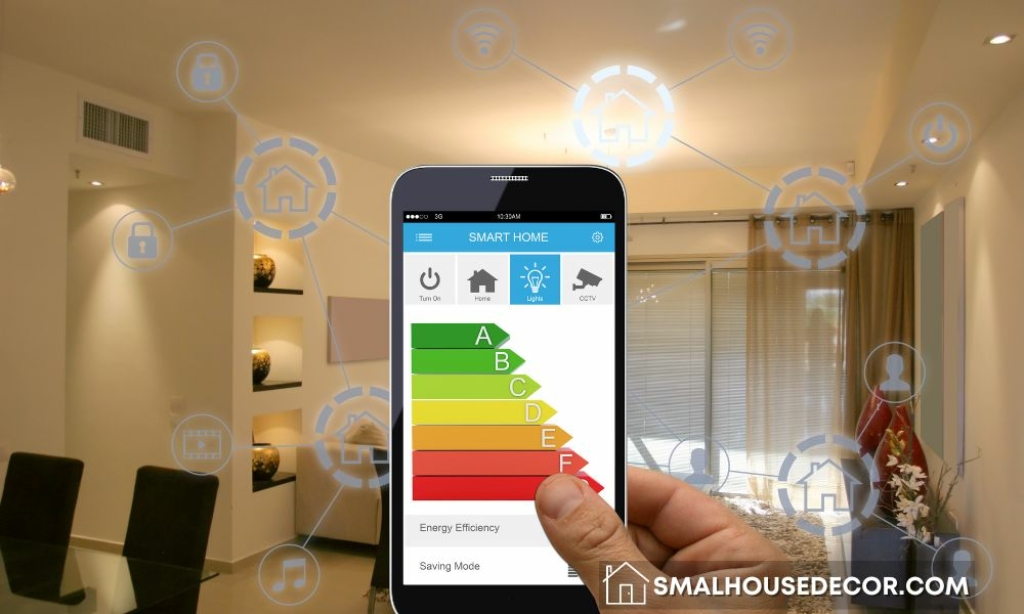Are you a homeowner or real estate investor who is looking to reduce your energy costs and make your home more environmentally friendly? If so, then this blog post is for you!
We’ll be discussing how making your home more energy efficient can help you save money in the long run and also contribute to an overall decrease in carbon emissions. You’ll find smart suggestions that don’t require extensive remodeling or breaking the bank such as adding insulation, changing out light bulbs, and using programmable thermostats. Use these tips to create a healthier environment while saving on those rising energy bills. Your house will thank you!

Install window shades and curtains to reduce heat loss
Installing window shades and curtains in your home is a great way to reduce heat loss and save energy. When temperatures drop, windows are one of the primary culprits of letting out heat. The solution is simple – by adding a layer of insulation with curtains and shades, you can increase the warmth inside your home while simultaneously reducing your energy bills.
Furthermore, window shades and curtains can also provide privacy and light control, making your home more comfortable and functional. So if you’re looking for an effective and affordable way to reduce your energy consumption this winter, consider installing window shades and curtains.
Remodel your home with energy-efficient materials
When it comes to making your home more energy-efficient, remodeling is one of the best ways to make a huge impact. By using energy-efficient materials such as insulated walls and roofs, you can significantly reduce your heating and cooling costs throughout the year. Additionally, using low-flow fixtures like showerheads and faucets can also help you save on your energy bills.
Once you get to enjoy your remodeled home, you’ll be glad you made the effort to improve your home’s energy efficiency. From LED light bulbs to energy-efficient windows and doors, there are plenty of ways to make your home more energy efficient. When you know which materials to use and how to install them correctly, you can save a great deal of money in the long run.
Replace your old appliances with high-efficiency models to save energy
Replacing old appliances with high-efficiency models is a smart way to save energy and reduce your carbon footprint. Not only do they consume less energy, but they also perform better and offer a range of modern features.
From refrigerators to washing machines, high-efficiency models are equipped with advanced technologies that make them more reliable, durable, and sustainable. They can help you cut down on your energy bills and conserve resources while enjoying the latest conveniences and functionalities. So why not upgrade your appliances today and start saving energy and money in the long run? It’s a simple yet effective step towards a cleaner and greener future for us all.
Consider investing in solar panels to convert your energy sources
As the world becomes more aware of the impact of climate change, many people are looking for ways to reduce their carbon footprint. One way to achieve this is by investing in solar panels. By converting the sun’s energy into electricity, solar panels provide a clean and renewable source of power.
Investing in solar panels not only reduces your energy bills but also provides you with a long-term investment that can increase the value of your property. Additionally, you can feel good about doing your part to help the environment by reducing your reliance on non-renewable energy sources.
Also Read: 8 Reasons Why You Should Add a Solar Panel Roof to Your Home
Improve insulation in the attic or walls for better temperature control indoors
When it comes to keeping your home comfortable all year round, insulation plays a critical role in controlling the temperature indoors. Without proper insulation, your home may be losing heat in the winter and gain heat in the summer, resulting in higher energy bills and uncomfortable living space.
One solution to improve insulation is to focus on the attic or walls since these areas can account for a significant amount of heat transfer. To improve your home’s energy efficiency, reduce its impact on the environment, and maintain comfortable temperatures year-round, consider upgrading or adding insulation in these areas. Whether you decide to tackle the project on your own or hire a professional, investing in better insulation will have long-term benefits.
Reduce water usage with low-flow fixtures like showerheads and toilets
If you’re looking to reduce your household’s water usage, low-flow fixtures are a great place to start. By installing showerheads and toilets that use less water, you can make a big impact on your water bill and the environment.
Low-flow showerheads typically use about 2.5 gallons per minute, while standard showerheads can use up to 5 gallons per minute. Similarly, low-flow toilets use about 1.6 gallons per flush, compared to standard toilets which can use up to 7 gallons per flush. Not only will upgrading your fixtures save water and money, but it can also improve the overall functionality of your bathroom.
It’s easy to reduce your energy bill and make your home more energy efficient. With a few simple steps like installing window shades and curtains, replacing old appliances with high-efficiency models, investing in solar panels, improving the insulation in the attic or walls, reducing water usage with low-flow fixtures, and utilizing natural ventilation solutions you can save money and become more environmentally friendly!
Making small changes today will have a positive impact on the environment for future generations to come. Start by utilizing these smart suggestions to make your home more energy efficient now!